
Many years back, hunter-croc catcher extraordinaire, Jack Bousfield wandered off into one of Botswana’s most wild & desolate places. His travels took him to the dry thornveld bush that characterizes the edge of the almost mythical Makgadikgadi Saltpansan enormous salt pan that stretches for 180 km. On this vast, flat empty space there is nothing to see literally nothing, and this is what makes a visit to the Makgadikgadi Saltpans a phenomal experience!
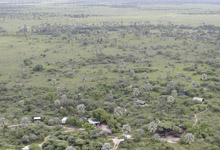
On the fringe of this vastness, amid Camelthorn trees and Ilala Palms nestles the Camp Kalahari, a must experience Botswana destination! Camp Kalahari steered away from the over the top luxury lodge and is more of a traditional safari camp, that carries a style of its own that is reminiscent of time when true explorers still explored the continent. Camp Kalahari offers guests a combination of value for money, fun, adventure and wilderness, and with this in mind welcomes children of all ages
Camp Kalahari has just 10 en-suite Meru styled safari tents, seven of which have twin beds, two that contain double beds and one family tent that offers two twin tents and an inter-leading bathroom. Each tents bathroom facilities include flush toilets, a basin and shower with hot & cold running water. Each tent is styled in the old fashioned explorer theme have comfortable beds with sheets and blankets, added to in winter, a hot water bottle. As part of the camps main area there is a spacious thatched structure that houses the library, lounge and dining area a perfect place to relax and absorb the enchanting peace & serenity that pervades the Kalahari bush.
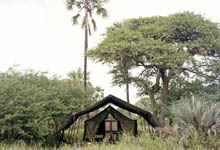
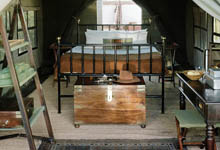
It is easy to understand the seasonal changes of the Kalahari bush in which the Makgadikgadi Pans is located - there are just two seasons, a wet one and a dry one! The dry season (essentially winter) runs from mid April to October and the wet season (essentially summer) extends from Nov to mid April.
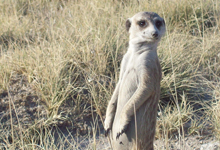
With the arrival of the summer rains the formerly dry thorn veld and parched salt pans transform to a green, bird & mammal rich African savanna and the pans to a vast inland lake albeit only a few centimeters deep in places. The rain water on the pans trigger an algal bloom in which millions of brine shrimps (a type of crustacean) come to life that attract flamingoes in the thousands to feed on them. The new green grass acts as a magnet to approximately 30 000 zebra and wildebeest that will make this region home for the next few months, and with the grazers come of course predators. This little known annual migration is one if the hidden treasures that this vast tract of wilderness offers.
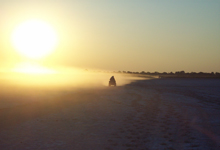
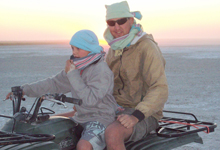
As the dry season approaches the Makgadikgadi Pans and the surrounding area takes on a new identity. The pans dry out to a vast crusted pan that stretches for what seems forever, the grasses and bush surrounding the pans turns different a yellows and the enormous blue skies rule the dry winter days and nights. The dry season offers guests the unique experience of being able to explore the open expanse of the flat salt pans and even sleep out under the stars in comfy bedrolls next to the fire, with the brilliant star studded sky as your ceiling. The nearby Chapmans Baobab is another point of interest in the Kalahari thornveld, as well as an early morning visit to an ever entertaining business of meerkats (suricates), that have become habituated to people. This little community of small mammals make their way out their burrows to catch the early morning sunrays that warm the winter days, and create very unique photo opportunities. Once warmed up, they start off on their days foraging activities in their quest of scorpion, beetles and other morsels.
Your Safari Planning starts here.
![]() Learn from our experience.
Learn from our experience.
![]() Expert advice on safaris & logistics.
Expert advice on safaris & logistics.
![]() Supportive ‘one on one’ service.
Supportive ‘one on one’ service.